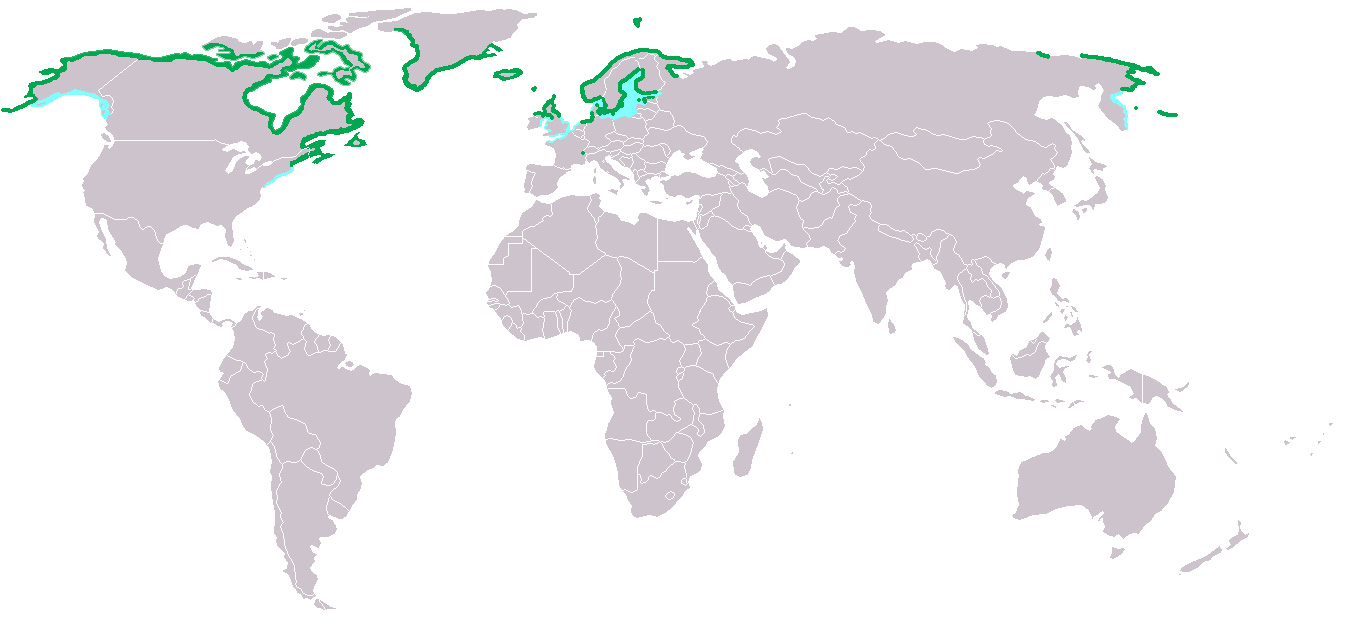
Állatleírás
The Common Eider (Somateria mollissima) is a large, sea-dwelling duck that is widely recognized for its distinctive appearance and significant ecological role in its natural habitat. Native to the colder coastal regions of the Northern Hemisphere, including North America, Europe, and Asia, this bird has adapted remarkably well to life in and around the frigid waters of the Arctic.Adult males of the species are particularly striking with their black and white plumage. During the breeding season, the male eider's body is predominantly black on the back and white on the front, with a pale green patch on the nape of the neck, which adds a splash of color to their otherwise monochromatic appearance. The females and non-breeding males, however, display a more camouflaged look, with mottled brown feathers that blend seamlessly into the coastal landscapes where they nest.
The Common Eider is a bird of considerable size, with adults reaching lengths of up to 70 centimeters (28 inches) and wingspans of approximately 110 centimeters (43 inches). This size makes it the largest of the ducks in its range, with a heavy body, large head, and a distinctive wedge-shaped bill that is slightly curved downwards, adaptations that serve it well in its cold, aquatic environment.
One of the most fascinating aspects of the Common Eider is its nesting behavior. Females exhibit a strong sense of community, often nesting in close proximity to one another in colonies that can number in the thousands. They display remarkable ingenuity in constructing their nests, using vegetation and lining them with eiderdown, the soft feathers plucked from their own breasts. This eiderdown is highly prized by humans for its insulating properties, leading to a history of both exploitation and conservation efforts aimed at protecting these birds.
The diet of the Common Eider is predominantly composed of crustaceans, mollusks, and a variety of sea invertebrates. They are skilled divers, capable of diving to depths of up to 20 meters (66 feet) to forage for food along the ocean floor. This diet not only sustains the eiders but also plays a role in controlling the populations of their prey, thereby maintaining the ecological balance within their habitat.
Migration is another key aspect of the life of the Common Eider. While some populations are resident, others undertake significant migrations to avoid the harshest winter conditions, moving from their breeding grounds in the Arctic to more temperate coastal areas.
Despite their robustness and adaptability, Common Eiders are not without their challenges. They face threats from oil spills, loss of habitat, hunting, and predation. However, thanks to various conservation efforts and legal protections, many populations have remained stable or are in recovery.
In conclusion, the Common Eider (Somateria mollissima) is a bird of both beauty and resilience. Its unique adaptations to a life spent mostly at sea, its complex social behavior, and its role in the ecosystem make it a fascinating subject of study and an important species for conservation efforts.
Előfordulási térkép

Hasonló állatok
Új állatfotók
Top 10 állat
- Dolphin gull (Leucophaeus scoresbii)
- Japanese macaque (Macaca fuscata)
- Stone loach (Barbatula barbatula)
- Russian tortoise (Testudo horsfieldii)
- Galápagos tortoise (Geochelone nigra complex)
- Greek tortoise (Testudo graeca)
- Diana monkey (Cercopithecus diana)
- Common flying dragon (Draco volans)
- Moustached guenon (Cercopithecus cephus)
- Galápagos penguin (Spheniscus mendiculus)


